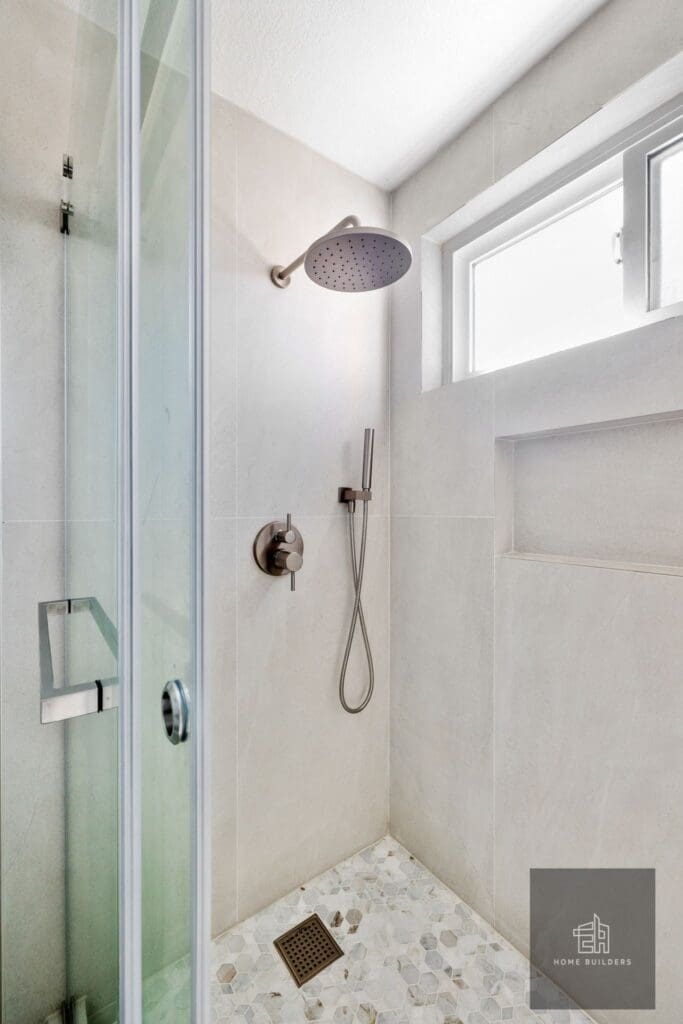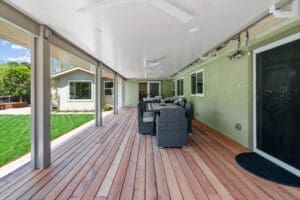The Bay Area Kitchen Renovation Dream: Don’t Let These Hidden Costs Gobble Your Budget
Okay, let’s chat. We’ve all been there, scrolling through Pinterest or Instagram, dreaming of that jaw-dropping, magazine-worthy kitchen. You know the one: sleek cabinets, waterfall island, maybe even one of those fancy smart fridges that tells you when you’re out of milk. It’s easy to get swept up in the vision, especially here in the Bay Area where kitchens are the heart of the home (and a major selling point!). But here’s the real talk, the stuff they don’t always show in the shiny ‘after’ photos: the hidden costs lurking behind the drywall, ready to ambush your carefully planned budget. And trust us, in this market, those surprises can sting. We’ve seen it all at EA Home Builders over in Contra Costa County.

We’re not here to scare you off your dream kitchen remodeling project. Far from it! We love transforming spaces. But we’ve learned (sometimes the hard way!) that the difference between a stressful money pit and a smooth, successful home remodeling adventure often boils down to anticipating the sneaky stuff. So, grab a coffee (brewed in your soon-to-be-old kitchen!), and let’s shine a light on those budget-busters you absolutely need to watch out for.
Permits & Paperwork: The Necessary Evil (That Costs More Than You Think)
You wouldn’t drive without a license, right? Well, tearing into your kitchen without the right permits is kind of like that, but with potentially way messier consequences. Cost? Oh yeah. Price out permits for kitchen remodeling in Walnut Creek, Danville, or Oakland, and you might need to sit down.
- The Permit Price Tag: It’s not just the fee itself (which can easily run into the hundreds or thousands depending on scope and location). Factor in:
- Plan review fees.
- Impact fees (yep, those exist).
- Potential extra charges if your project triggers requirements for energy calculations or other specialized reviews. Suddenly, that “small fee” isn’t so small.
- The Time Tax: Waiting for permits is like watching paint dry, but less productive. Delays mean your project drags on, and time is money, especially if you’re living elsewhere or paying for storage. A good general contractor knows the local processes inside out – like we do across Contra Costa County – and can navigate this maze efficiently. Trying to DIY permits? Bless your heart. The learning curve is steep, mistakes are costly, and inspectors aren’t known for their patience with rookies.
- The “Oops, We Need That Too” Factor: Opening up walls might reveal you need separate electrical, plumbing, or even mechanical permits you hadn’t initially accounted for. FYI, this happens more often than you’d think, especially in older Bay Area homes.
Bottom line: Don’t guesstimate permit costs. Your remodeling company should provide a realistic estimate upfront and handle the heavy lifting. It’s part of the value you pay for. Skimping here? That’s a gamble with your safety and your wallet.
Structural Surprises: When Your Walls Start Talking (And It’s Expensive)
Ah, the joys of older Bay Area homes! Charming? Absolutely. Predictable? Not so much. You start demo day excited… and then you find it. The “it” could be anything:
- Rotted Framing: Water damage from an old leak you never knew about? Common.
- Outdated Wiring: Knob-and-tube hiding behind that plaster? Big cost to replace, and absolutely necessary for safety and modern appliances.
- Plumbing Nightmares: Galvanized pipes on their last legs, or worse, improper DIY fixes from the 70s.
- Unlevel Floors or Sagging Joists: That beautiful new tile floor needs a solid base. Fixing the structure underneath adds significant labor and materials.
- Asbestos or Lead Paint: Especially common in pre-1978 homes. Discovery means specialized (read: expensive) abatement procedures before any real work can continue. This isn’t optional – it’s regulated and crucial for health.
Ever wonder why experienced home renovation contractor**s always budget a contingency? This is the main reason. We build it in (usually 10-20%) because we know these ghosts in the walls exist. Skipping a thorough pre-renovation inspection by your general contractor is like playing renovation roulette. You might get lucky… or you might blow your entire appliance budget fixing the floor joists. IMO**, knowing the potential monsters upfront is always better than the shock mid-project.
Electrical & Plumbing: The Guts That Cost Big Bucks
You picture the stunning pendant lights and the fancy pot filler. What you don’t picture? The miles of new wire, upgraded panels, and reconfigured pipes needed to make those dreams function safely and legally. This is where “just moving the sink” turns into a four-figure adventure.
- Panel Power-Up: Older electrical panels (like 100-amp service) often can’t handle the load of a modern kitchen with high-wattage appliances, under-cabinet lighting, and charging stations. Upgrading to 200-amp service is common and costly.
- Rewiring Reality: Adding circuits for new appliances (hello, induction cooktop!), dedicated outlets for the island, and proper GFCI protection where needed means running a lot of new wire. Labor is intensive.
- Plumbing Paths: Relocating a sink, dishwasher, or gas line for a new range isn’t just about the new fixture location. It involves opening walls/floors, running new lines, potentially upgrading pipe sizes or materials, proper venting, and patching everything back up. Price this out before you commit to that island sink placement!
- Gas Line Gotchas: Adding a gas cooktop or range? That requires a licensed pro running a new gas line, which involves permits, pressure tests, and strict code compliance. Don’t assume your existing line is sufficient or conveniently located.
Pro Tip: A detailed plan before demolition is key. A good general contractor will coordinate closely with their electricians and plumbers to map this out accurately, minimizing surprises. This isn’t the place for vague promises – get specifics in writing. Thinking of skipping the expert home improvement team for this? Let’s just say YouTube tutorials won’t save you from a code violation (or a flood).
The “While We’re At It” Syndrome: Scope Creep’s Siren Song
This is the biggest budget killer we see, and honestly, it’s totally understandable! You’re living in chaos, the walls are open, the crew is there… why not tackle that adjacent powder room? Or finally fix that squeaky floor in the hallway? Or upgrade the laundry room since the plumbing is right there? Sound familiar?
- The Domino Effect: Changing one thing often necessitates another. “Just updating the backsplash” might reveal the need for new drywall. Opening up to the dining room means matching flooring and trim. That “quick” bathroom remodeling update next to the kitchen suddenly requires its own permits and fixtures.
- Decision Fatigue & Upgrades: Mid-project, you’re exposed to so many options. That standard faucet starts looking dull compared to the stunning commercial-style one… and it’s only a few hundred more, right? Multiply that by a dozen decisions, and your budget is toast.
- Labor & Timeline Impact: Every “while we’re at it” adds time. More time means more labor costs. It also disrupts the sequencing, potentially delaying other trades and extending the overall project duration (and your temporary kitchen exile!).
How do we fight this at EA Home Builders? Rigorous planning and a signed, detailed scope of work before hammer meets nail. We discuss priorities upfront and help you understand the ripple effects of changes. Want flexibility? Build a contingency fund specifically for potential owner-initiated upgrades, separate from the structural surprise fund. Stick to the plan as much as humanly possible. Your future self (and bank account) will thank you.
Appliance & Fixture Realities: Sticker Shock Beyond the Showroom Floor
You’ve budgeted for the fridge and range you saw on sale. Great! But did you budget for…
- Delivery & Installation: That “free delivery” often means curb-side. Getting it up your driveway, steps, and into the house? Hauling away the old one? Connecting water lines, gas lines, or complex electrical? These services add up fast. Luxury home renovations often involve heavy, complex appliances needing special handling.
- The “Fit” Factor: Standard cabinet sizes don’t always play nice with that extra-wide French door fridge you fell in love with. Custom cabinet modifications or filler panels cost extra. Undercounter appliances might need specific cabinet depths or ventilation solutions you hadn’t considered.
- Ventilation Victories: A powerful range hood is essential, but venting it outside properly (not just recirculating!) can be complex and expensive, especially if it requires running ductwork through walls, ceilings, or an exterior wall that wasn’t planned for it. Cost includes materials, labor, and potentially exterior modifications.
- Fixture Finishing Touches: The faucet you chose needs special mounting hardware? The farmhouse sink requires extra cabinet bracing? The pot filler needs a dedicated shut-off valve inside the cabinet? These little necessities add to the bill.
Solution: When getting quotes for appliances and fixtures, always ask for the total installed cost, including haul-away, connection fees, and any potential modification costs. Discuss exact dimensions and installation requirements with your general contractor before finalizing purchases. Don’t get caught assuming everything just “plugs in.”
The Labor Lottery: Why “Cheapest” is Often the Most Expensive
Let’s be blunt: skilled labor in the Bay Area is expensive. And it should be! Quality craftsmanship, expertise navigating local codes, proper licensing, and insurance cost money. Trying to save big bucks here is the riskiest gamble of all.
- The “Gotcha” Quote: That suspiciously low bid? It almost always excludes something critical: permits, disposal fees, project management, or a realistic contingency. They might be planning to cut corners or use subpar materials. When the inevitable problems arise, they vanish, leaving you holding the bag (and paying twice to fix it).
- Specialized Skills = Higher Rates: Custom remodels, complex electrical or plumbing work, whole house remodeling tie-ins, structural modifications – these require experienced, licensed tradespeople. You pay for their expertise and the peace of mind it brings.
- Project Management Matters: Coordinating plumbers, electricians, carpenters, tilers, and inspectors is a full-time job. A competent general contractor earns their fee by keeping the project on track, solving problems proactively, and ensuring quality control. Trying to GC it yourself to save money? Unless it’s your actual job, the stress and potential for costly errors are immense. :/
- The Timeline Tango: Cheap labor often means slow labor, multiple crews juggling too many jobs, or worse, no-shows. Delays cost you money in temporary housing, storage, or just sheer frustration. An experienced remodeling company values their reputation and your timeline.
Why EA Home Builders focuses on transparency: We provide detailed, comprehensive quotes. You see where your money goes – skilled labor, quality materials, proper permits, project management, and a realistic contingency. We’re your nearest partner in this, not just a vendor. Check those reviews! Look for consistent praise about communication, problem-solving, and sticking to budget/timeline. It’s worth its weight in gold (or in this case, premium quartz countertops).
Bay Area Kitchen Reno Hidden Costs: Quick Reference Table
| Hidden Cost Category | What It Often Includes | Typical Bay Area Cost Range* | How to Minimize Impact |
|---|---|---|---|
| Permits & Paperwork | Application fees, plan reviews, impact fees, potential extra inspections | $800 – $5,000+ | Get detailed permit cost estimate upfront. Use an experienced local GC who knows the process. |
| Structural Surprises | Rotted framing, outdated wiring/plumbing, unlevel floors, asbestos/lead abatement | $2,000 – $20,000+ (Highly Variable) | Invest in a thorough pre-renovation inspection. Budget a 10-20% contingency. |
| Electrical Upgrades | Panel upgrade (to 200A), new circuits, rewiring, dedicated appliance outlets | $3,000 – $10,000+ | Plan appliance locations early. Discuss electrical needs in detail with your GC & electrician before demo. |
| Plumbing Upgrades | Relocating lines (sink, DW, gas), new pipe runs, venting work, gas line installation | $1,500 – $8,000+ | Finalize fixture placements early. Understand the complexity of moves. Get specific plumbing quotes. |
| “While We’re At It” Creep | Added tasks (bathroom touch-up, flooring extension, upgrade choices), labor overrun | Can easily add 15-50%+ to budget | Stick to the signed scope! Create a separate “wish list” budget for potential upgrades. Resist mid-project scope changes. |
| Appliance/Fixture Install | Delivery beyond curb-side, in-home installation, gas/water hookups, haul-away, cabinet mods | $150 – $1,000+ per major appliance | Get TOTAL installed cost quotes for appliances/fixtures before buying. Confirm fit with cabinet plans. |
| Ventilation | Proper ducting to exterior (especially through tricky spaces), exterior hood vent cap | $800 – $3,500+ | Plan hood location/venting path early. Factor into structural/design discussions. |
| Unexpected Labor Costs | Correcting poor work from cheap contractors, delays from unskilled labor, rework | Varies Widely (Often Significant) | Don’t choose solely on lowest price. Hire a reputable, insured GC with strong reviews and clear contracts. |
Table Notes: Ranges are estimates based on typical mid-range Bay Area projects and can vary significantly based on project size, location (Walnut Creek, Danville, Oakland differ), home age, and complexity. Always get detailed, project-specific estimates.
Wrapping It Up: Knowledge is Power (and Savings!)
Phew! That’s a lot, right? But forewarned is forearmed. Tackling a kitchen remodeling project in the Bay Area is exciting, but going in blindfolded to the hidden costs is a recipe for stress and financial strain.
Here’s our cheat sheet for avoiding budget nightmares:
- Choose Your General Contractor Like Your Kitchen Depends On It (It Does!): Look for experience, transparency, detailed contracts, local knowledge (ask about Contra Costa County specifically!), and stellar reviews. They’re your quarterback.
- Invest in Pre-Planning & Design: Spend the money upfront on detailed plans and specifications. It’s cheaper than fixing misunderstandings later.
- Get Multiple Detailed Bids: Compare apples-to-apples. If a bid seems too good to be true, it almost certainly is. Ask what’s excluded.
- Budget a Realistic Contingency: 10-20% is standard for a reason. Hope you don’t need it, but plan like you will.
- Resist Scope Creep: Stick to the plan! Save those “while we’re at it” ideas for the next phase (maybe that basement remodel or bathroom renovation you’ve been eyeing? We know great basement contractors and bathroom renovation contractor partners too!).
- Factor in EVERYTHING: Permits, disposal, delivery, installation, everything. Ask “what else?” constantly.
Planning a kitchen renovation in Walnut Creek, Danville, Oakland, or anywhere else nearby in the Bay Area? Don’t navigate the hidden cost minefield alone. That’s where we come in. At EA Home Builders, based right here in Contra Costa County, we specialize in transparent planning and expert execution for kitchen remodeling, bathroom remodeling, whole house remodeling, and even teaming up with the closest specialists for home addition contractor needs or basement remodel contractor work. We’ve seen the surprises and know how to plan for them, giving you confidence and control over your investment.
Ready to build your dream kitchen without the nightmare budget? Let’s talk! Get in touch with EA Home Builders for a no-pressure, honest conversation about your vision and how we can help you avoid these common pitfalls. Because your dream kitchen should be exciting from start to finish, not a source of financial heartburn. 🙂
Frequently Asked Questions (FAQs)
-
Q: What’s the single biggest hidden cost culprit in Bay Area kitchen remodels?
A: While structural surprises are infamous, “Scope Creep” is often the most insidious and controllable budget killer. The constant temptation to add “just one more thing” or upgrade finishes mid-project can completely derail your finances. Sticking rigorously to the pre-agreed plan is crucial. Contingency funds are for unforeseen issues, not unchecked desires. -
Q: How much should I realistically budget for contingency on a Bay Area kitchen remodel?
A: For a standard kitchen remodeling project in our area (think Walnut Creek, Danville, Oakland), 10-20% of the total project cost is a prudent range for your contingency fund. For older homes (pre-1970s) or very complex custom remodels, leaning towards 20% or even slightly more is wise. This isn’t “extra money” – it’s essential insurance against the unknown lurking behind your walls. -
Q: Is it worth hiring a general contractor, or can I manage subs myself to save money?
A: Unless you are a seasoned construction manager with extensive local trade networks and code knowledge, hiring a reputable general contractor is almost always worth the investment, especially in the high-stakes, high-cost Bay Area market. A good GC provides:- Single Point of Contact & Accountability: No chasing dozens of trades.
- Expertise & Problem Solving: They anticipate and navigate issues.
- Trade Coordination: Ensures sequencing is efficient, saving time/money.
- Quality Control: Manages the work of all subcontractors.
- Permit & Code Navigation: Handles the complex local bureaucracy.
- Warranty & Insurance: Protects you if things go wrong.
The potential cost of delays, errors, rework, and sheer stress from self-GCing usually far outweighs the GC’s fee. Look for a remodeling company with strong local reviews and specific kitchen remodeling expertise like EA Home Builders.






